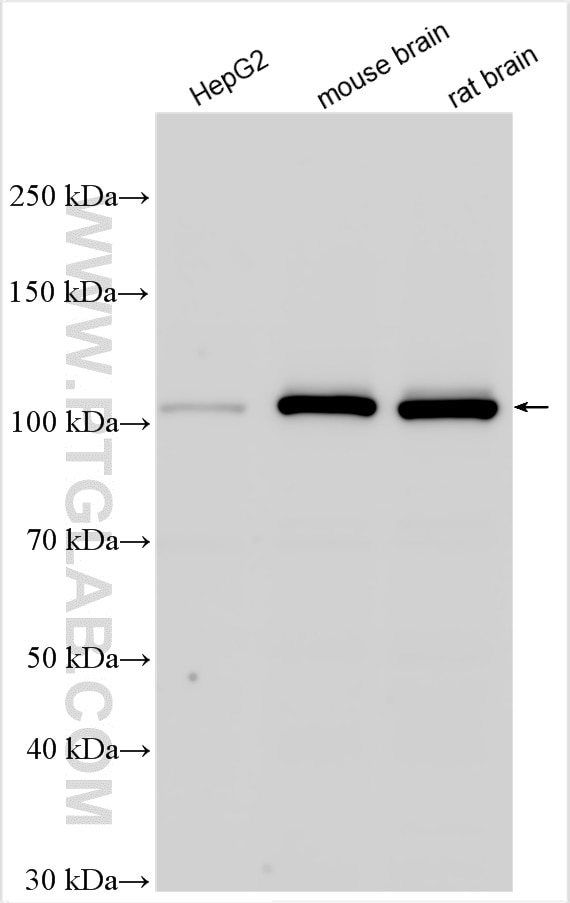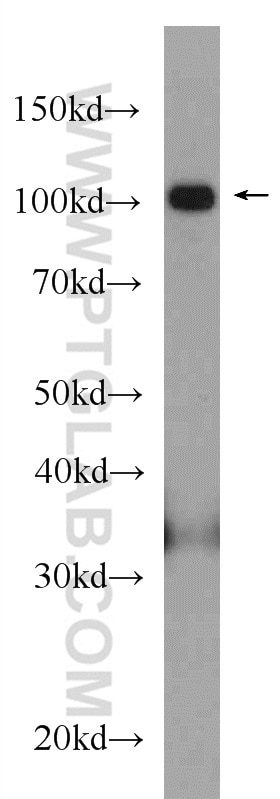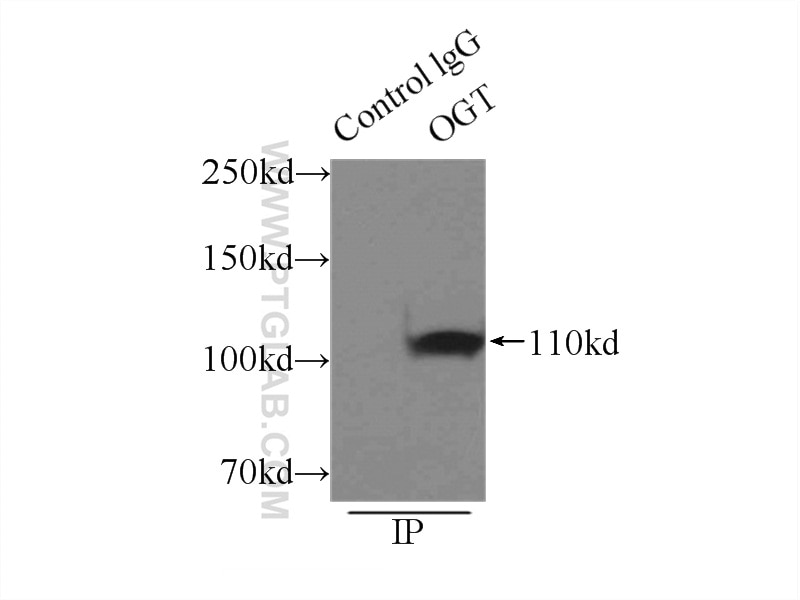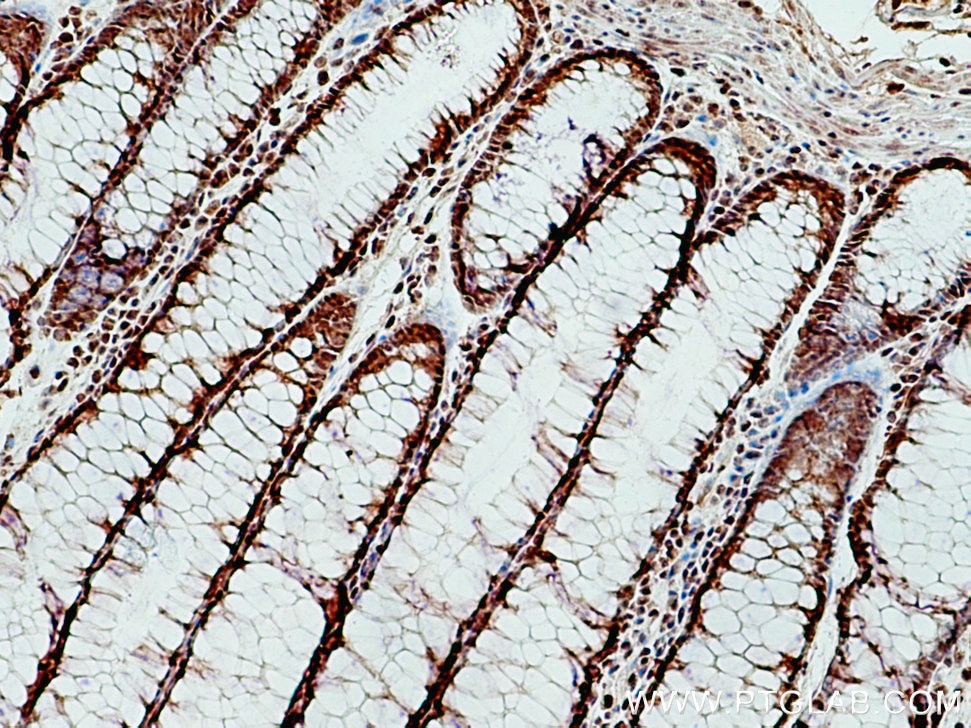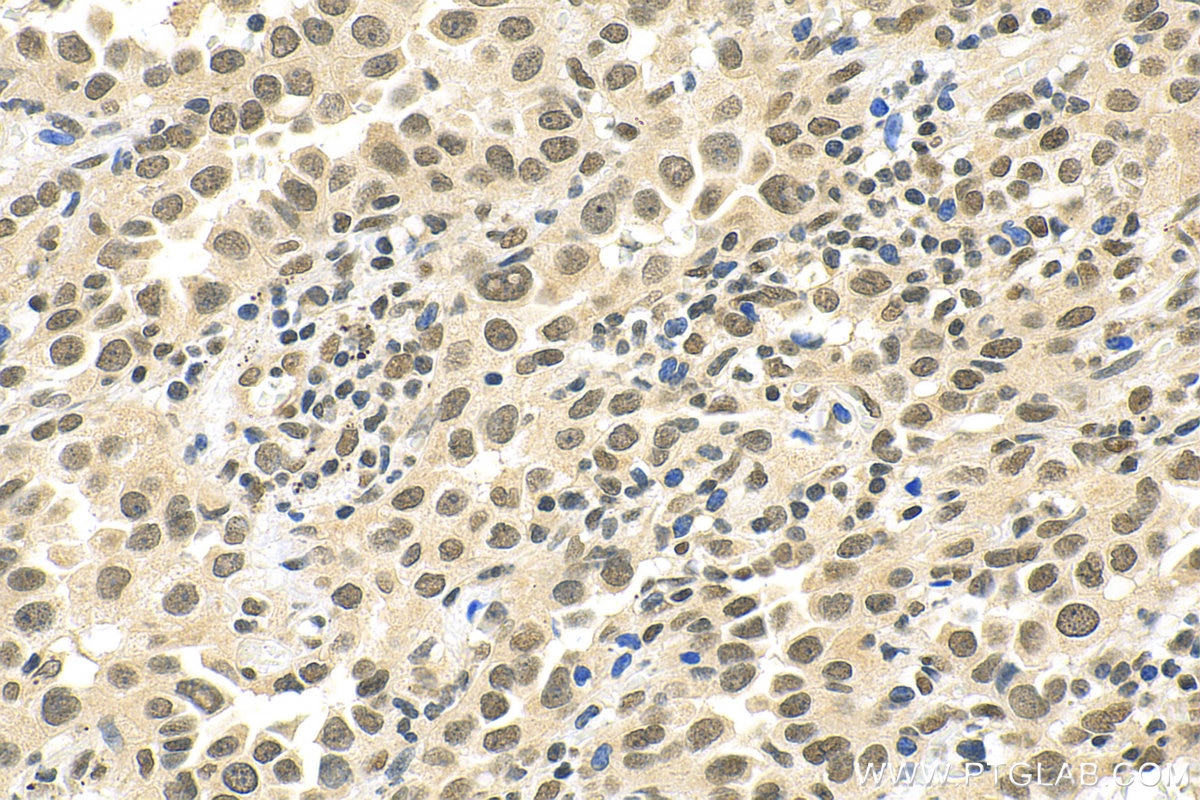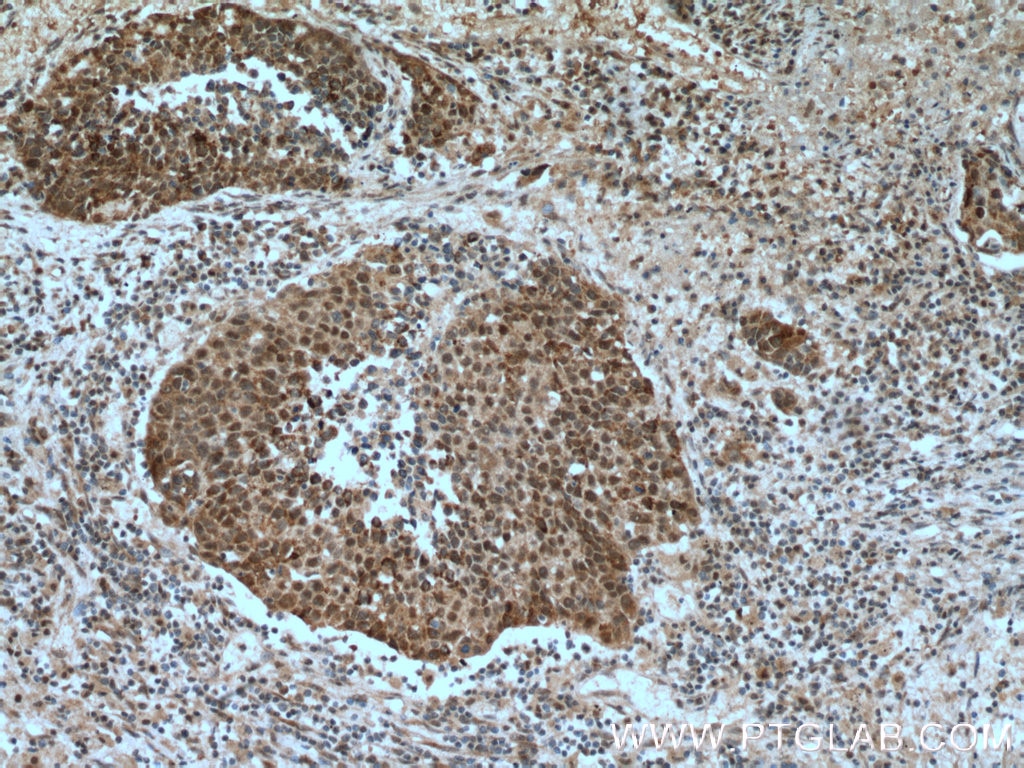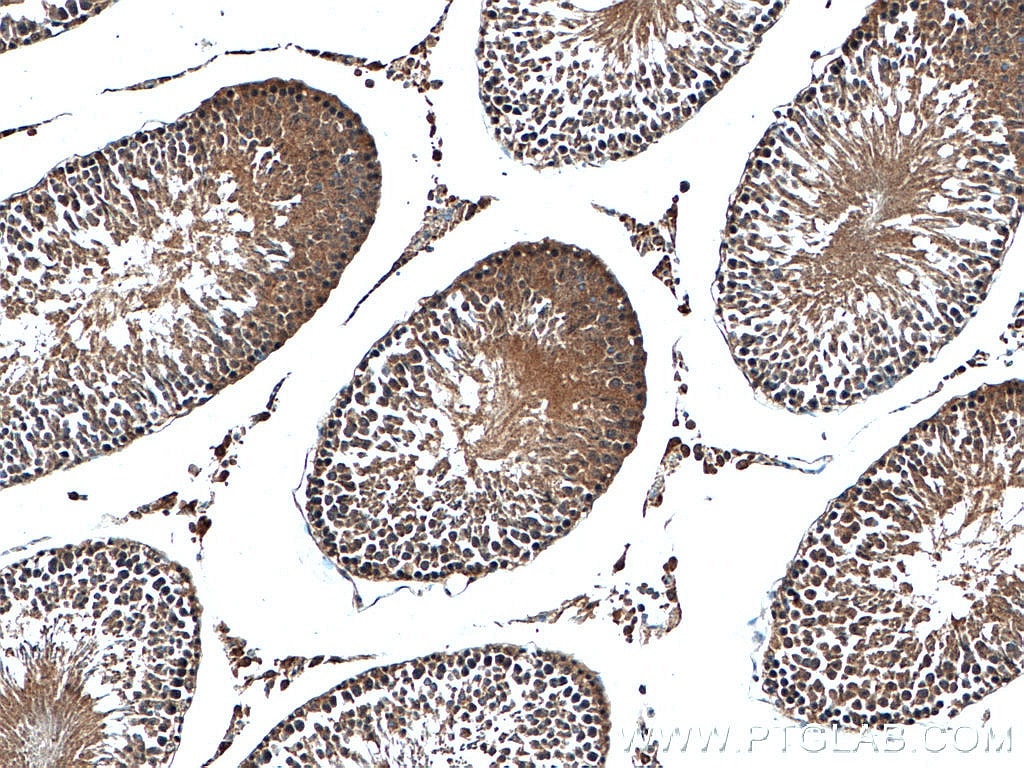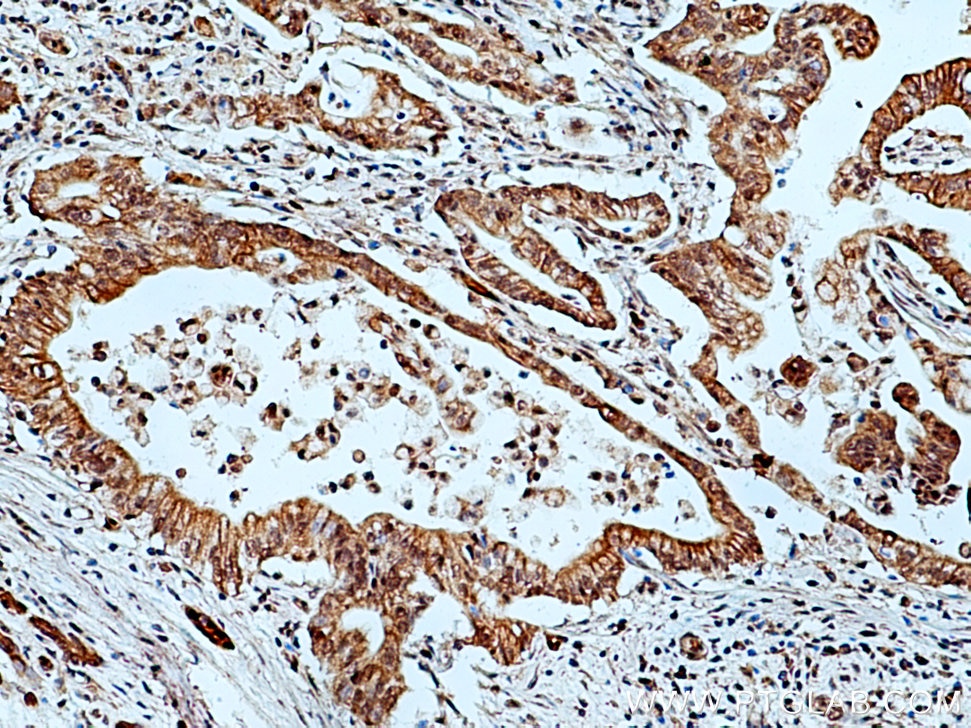- Phare
- Validé par KD/KO
Anticorps Polyclonal de lapin anti-OGT
OGT Polyclonal Antibody for WB, IHC, IP, ELISA
Hôte / Isotype
Lapin / IgG
Réactivité testée
Humain, rat, souris
Applications
WB, IHC, IF, IP, CoIP, IP-MS, ELISA
Conjugaison
Non conjugué
N° de cat : 11576-2-AP
Synonymes
Galerie de données de validation
Applications testées
| Résultats positifs en WB | cellules HepG2, tissu cérébral de rat, tissu cérébral de souris, tissu hépatique de souris |
| Résultats positifs en IP | tissu cérébral de souris |
| Résultats positifs en IHC | tissu de cancer du côlon humain, tissu cérébral de souris, tissu de cancer du pancréas humain, tissu de cancer du poumon humain, tissu testiculaire de rat il est suggéré de démasquer l'antigène avec un tampon de TE buffer pH 9.0; (*) À défaut, 'le démasquage de l'antigène peut être 'effectué avec un tampon citrate pH 6,0. |
Dilution recommandée
| Application | Dilution |
|---|---|
| Western Blot (WB) | WB : 1:2000-1:12000 |
| Immunoprécipitation (IP) | IP : 0.5-4.0 ug for 1.0-3.0 mg of total protein lysate |
| Immunohistochimie (IHC) | IHC : 1:200-1:800 |
| It is recommended that this reagent should be titrated in each testing system to obtain optimal results. | |
| Sample-dependent, check data in validation data gallery | |
Applications publiées
| KD/KO | See 13 publications below |
| WB | See 66 publications below |
| IHC | See 15 publications below |
| IF | See 10 publications below |
| IP | See 9 publications below |
| CoIP | See 5 publications below |
Informations sur le produit
11576-2-AP cible OGT dans les applications de WB, IHC, IF, IP, CoIP, IP-MS, ELISA et montre une réactivité avec des échantillons Humain, rat, souris
| Réactivité | Humain, rat, souris |
| Réactivité citée | rat, Humain, souris |
| Hôte / Isotype | Lapin / IgG |
| Clonalité | Polyclonal |
| Type | Anticorps |
| Immunogène | OGT Protéine recombinante Ag2160 |
| Nom complet | O-linked N-acetylglucosamine (GlcNAc) transferase (UDP-N-acetylglucosamine:polypeptide-N-acetylglucosaminyl transferase) |
| Masse moléculaire calculée | 1046 aa, 117 kDa |
| Poids moléculaire observé | 110 kDa |
| Numéro d’acquisition GenBank | BC014434 |
| Symbole du gène | OGT |
| Identification du gène (NCBI) | 8473 |
| Conjugaison | Non conjugué |
| Forme | Liquide |
| Méthode de purification | Purification par affinité contre l'antigène |
| Tampon de stockage | PBS with 0.02% sodium azide and 50% glycerol |
| Conditions de stockage | Stocker à -20°C. Stable pendant un an après l'expédition. L'aliquotage n'est pas nécessaire pour le stockage à -20oC Les 20ul contiennent 0,1% de BSA. |
Informations générales
O-linked N-acetylglucosamine transferase (OGT) catalyzes the attachment of N-acetylglucosamine (GlcNAc) monosaccharides to the hydroxyl group of serine or threonine residues of numerous nuclear and cytoplasmic proteins and may play important roles in a large number of diverse intracellular processes ranging from translational control, transcription, transcriptional repression, INS resistance and regulation of the cell cycle. It exists as a heterotrimeric complex with two 110 kDa and one 70 kDa subunits. Recent studies have shown that O-GlcNAcylation plays essential roles in cancer formation and progression. O-GlcNAcylation as well as OGT expression was found to be significantly elevated in the cancer tissues.
Protocole
| Product Specific Protocols | |
|---|---|
| WB protocol for OGT antibody 11576-2-AP | Download protocol |
| IHC protocol for OGT antibody 11576-2-AP | Download protocol |
| IP protocol for OGT antibody 11576-2-AP | Download protocol |
| Standard Protocols | |
|---|---|
| Click here to view our Standard Protocols |
Publications
| Species | Application | Title |
|---|---|---|
Cell Metab Protein O-GlcNAcylation and hexokinase mitochondrial dissociation drive heart failure with preserved ejection fraction | ||
Nat Cell Biol O-GlcNAcylation determines the translational regulation and phase separation of YTHDF proteins | ||
Nat Metab Maternal exercise prevents metabolic disorders in offspring mice through SERPINA3C | ||
J Clin Invest Cancer-associated fibroblast-secreted glucosamine alters the androgen biosynthesis program in prostate cancer via HSD3B1 upregulation | ||
Mol Cell Spatiotemporal Proteomic Analysis of Stress Granule Disassembly Using APEX Reveals Regulation by SUMOylation and Links to ALS Pathogenesis. | ||
Nat Chem Biol Electrophilic probes for deciphering substrate recognition by O-GlcNAc transferase. |
Avis
The reviews below have been submitted by verified Proteintech customers who received an incentive for providing their feedback.
FH Christelle (Verified Customer) (01-13-2025) | Immunofluorescent analysis of (PFA 4%) fixed human renal mesangial cells using OGT antibody (11576-2-AP) at dilution of 1:50 and AF488-Conjugated Donkey Anti-Rabbit IgG (Life Technologies), Star Red membrane probe (Abberior, yellow) and DAPI (blue). 2 files uploaded : 1 aquisition without the membrane probe and the same aquisition with the membrane probe
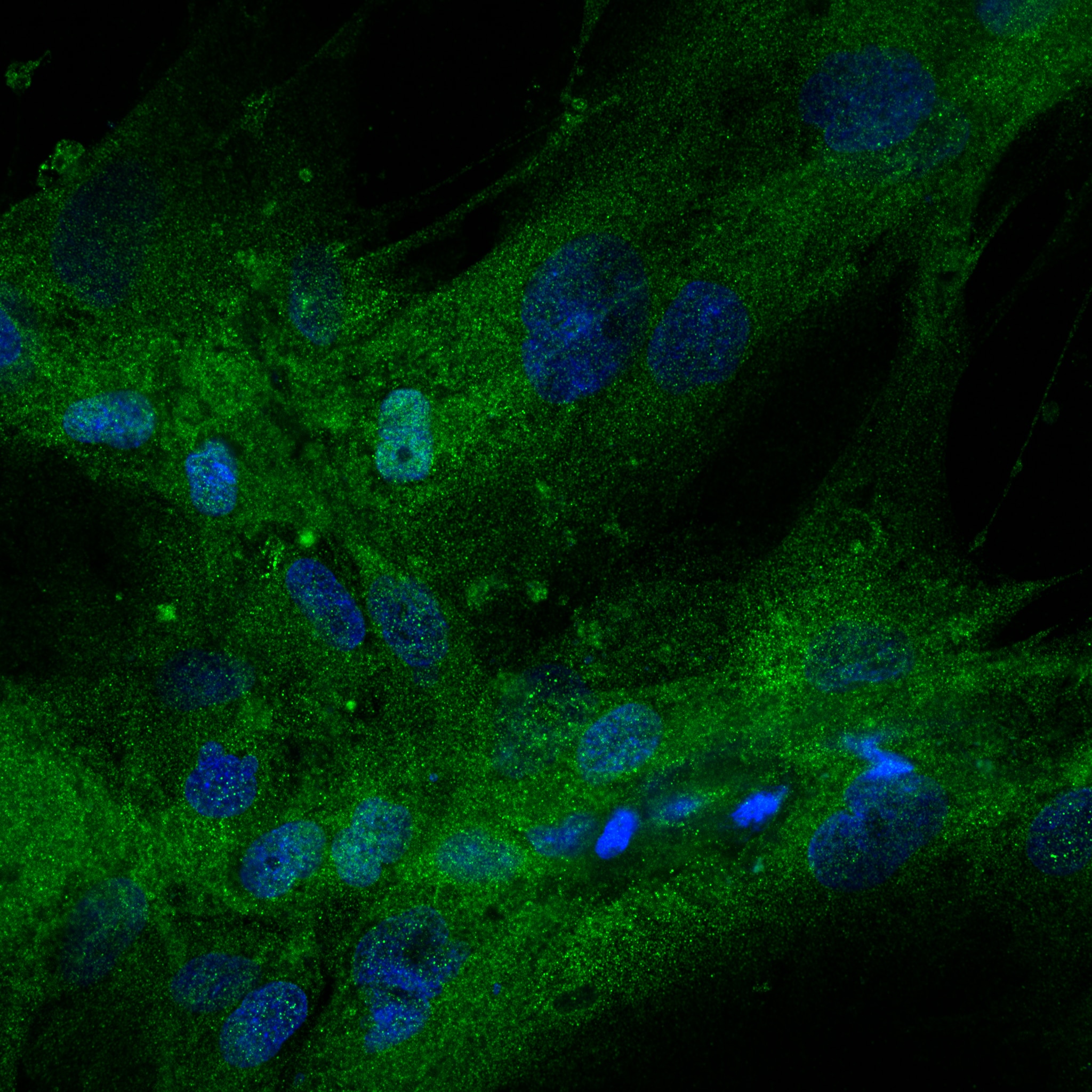 |
FH Sarah-Eve (Verified Customer) (06-02-2023) | Works well for WB, dilution 1:1000
|
FH Isha (Verified Customer) (05-18-2022) | Antibody worked perfect at 1:1000 dilution for W.B. and 1:500 for IHC
|
